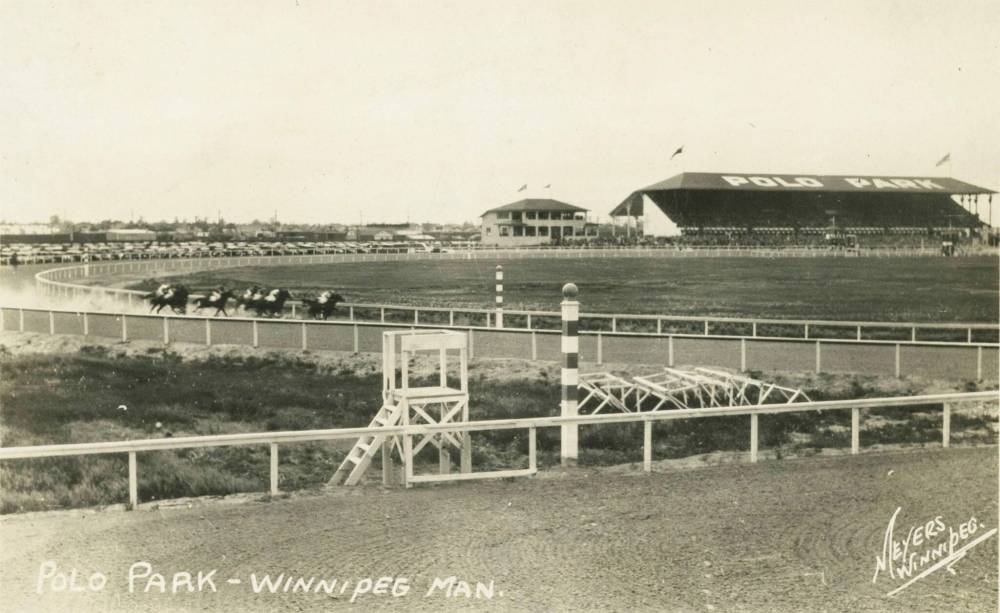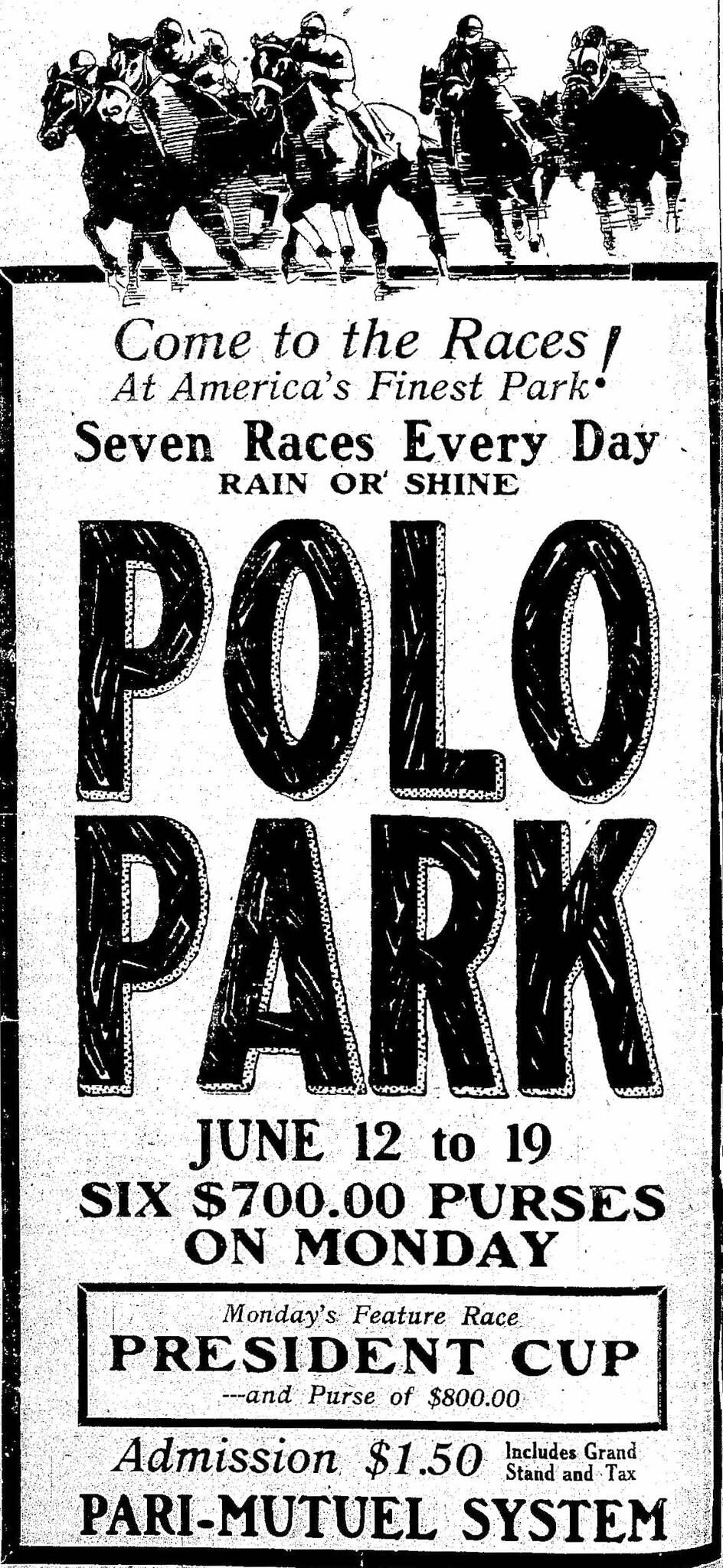The story of Polo Park racetrack
Advertisement
Hey there, time traveller!
This article was published 05/03/2025 (214 days ago), so information in it may no longer be current.
The 1920s was a great decade for local horse racing fans, as three racetracks were operating in the Winnipeg area. The oldest was River Park in St. Vital, which had hosted races since the 1890s and received a cash infusion to improve its facilities in 1921. Whittier Park in St. Boniface opened in 1924 and was joined the following year by Polo Park.
A consortium of businessmen announced in October 1924 that it had secured a 10-year lease on a 56.5-acre plot of land on the city’s western boundary with St. James. On it, they would build the Polo Park racetrack under the licence of the St. Vital Exhibition Association and run it under the Winnipeg Jockey Club name.
Polo Park’s manager was R. J. Speers, a man long associated with the horse trade in the city. He ran a horse auction business, raised thoroughbreds, and had previously managed both the River Park and Whittier Park tracks. He was a driving force behind the creation of Polo Park.

Meyer’s Photography Winnipeg
An undated photo of the Polo Park racetrack in action. It officially opened on June 12, 1925, and held its last race on July 4, 1956.
The club hired Pratt and Ross Architects to design the new amenity. The firm was also responsible for buildings such as the Winnipeg Amphitheatre, the Electric Railway Chambers, and Brandon’s Prince Edward Hotel, but had never designed a racetrack. Ralph Pratt travelled to tracks around North America to get inspiration.
The construction contract was awarded in March 1925 to Creelman and Company, a builder with offices in Winnipeg, Calgary and Vancouver. It was best known for its CPR and government contracts to build everything from rail stations to armouries and had built the Whittier Park racetrack.
Work on the site began immediately, as the Thoroughbred Racing Association announced that its 1925 circuit would begin in Calgary on May 30 and arrive in Winnipeg on June 12. The budget for Polo Park was around $150,000. This included a three-quarter mile track, the longest in Western Canada at the time, with a field in the middle for polo and other sports. There was a grandstand for over 4,000 people, with concessions located underneath and a sloping lawn overlooking the track that could seat thousands more. The stables accommodated 350 horses.
Construction appears to have gone smoothly, with the Free Press reporting in mid-April that “…Polo Park is rapidly assuming the appearance of a race track and much of the preliminary work has been completed.” A Tribune story noted on May 30 that “…the hammer and saw have been singing their songs daily in the hopes that the new plant will be ready for the opening.”
Polo Park opened on June 12, 1925 in what was called a “large and fashionable affair” that featured seven races and $5,000 in purses. Around 5,000 people attended opening day – less than expected, owing to a threat of rain which never materialized.

Polo Park held its last race on July 4, 1956. It was demolished later that year to make way for the Polo Park Shopping Centre.





